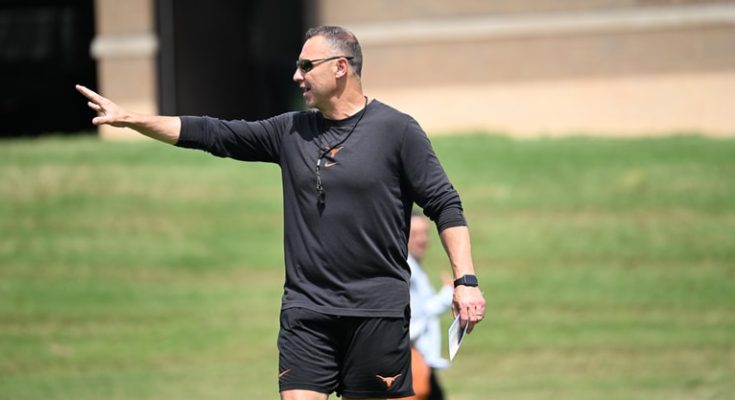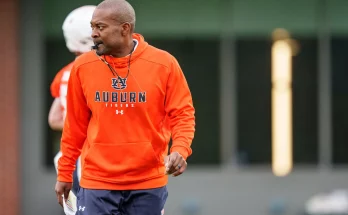20 Years of Hype, Hope, and Humble Pie: What Texas Football Predictions Got Right—and Hilariously Wrong
Texas football is a rollercoaster, and if you’ve been riding it for the past twenty years, you’ve probably been through every possible emotion—from national championship highs to the kind of facepalming losses that make you want to throw your burnt orange hat across the room. But maybe even more entertaining than the games themselves? The predictions. The bold, brash, sometimes painfully wrong (and occasionally spot-on) declarations made year after year by fans, media, and analysts alike. Because if there’s one thing Texas football has never lacked, it’s expectations. And looking back on two decades of prognostications is like flipping through a scrapbook of college football chaos—full of triumphs, disasters, and a few lessons nobody seems to ever actually learn.
Let’s rewind to the early 2000s. The Mack Brown era was in full swing, and optimism wasn’t just high—it was practically delusional. Every August, magazines would slap Texas into the top five, fans would scream “This is the year,” and message boards would explode with comparisons to USC, Miami, and Alabama. And to be fair, those predictions weren’t entirely unfounded. Texas was stockpiling talent, and by 2005, everything finally came together. Vince Young led the Horns to an unforgettable national title victory over USC in the Rose Bowl, and every “This is the year” prediction from the early 2000s suddenly looked prophetic. For once, the hype matched the outcome. The prediction game was strong.
But if 2005 was the mountain peak, what followed was a slow, wobbly descent into the land of missed expectations. Colt McCoy kept the team relevant for a few more seasons, even taking Texas back to the national title game in 2009. But after that? The wheels didn’t just fall off—they flew into orbit. Predictions kept coming, though. Each summer, some expert would find a reason to believe the Horns were “back,” and each fall, those takes would age like milk. The 2010s became a decade of “We’re Back” tweets and .500 records. Coaches came and went. Five-star recruits showed up and disappeared into the transfer portal. And yet the predictions never wavered.
Remember the “Swoopes Era”? In 2014, people were hyping Tyrone Swoopes as the next dual-threat QB legend. He had the size. He had the arm. He had the Nike promos. What he didn’t have was consistency—or an offensive line that could keep him upright. Texas limped to a 6–7 season that year. Still, the following season, someone inevitably claimed that “Texas has the talent to win the Big 12.” They didn’t. And they wouldn’t for quite a while.
Then came Tom Herman. The golden boy from Houston, riding high after taking the Cougars to national relevance, was supposed to be the guy. And when he landed Sam Ehlinger, a fiery Austin native who bled burnt orange, things got spicy again. In 2018, the Horns beat Oklahoma, took down Georgia in the Sugar Bowl, and Ehlinger grabbed a mic postgame and said, “We’re baaaack.” And for a second, it felt real. The program looked poised to return to national prominence. The next year, the media bit again. Preseason Top 10. Big 12 title predictions. Some even whispered “Playoff sleeper.”
And then, boom. Back to Earth. Injuries, questionable coaching, and a defense that couldn’t stop a nosebleed sent Texas right back into mediocrity. Herman’s hot seat got hotter until it eventually melted under him. Another round of predictions, another batch of disappointment. If there’s one thing we’ve learned from two decades of Texas football takes, it’s this: optimism in Austin is renewable energy. It never runs out, no matter how many times it crashes.
Then came the Sarkisian hire. Steve Sarkisian rolled in with Alabama polish, a reputation for offensive wizardry, and a mountain of pressure. Early returns were rough. The Horns blew a huge lead to Oklahoma in 2021 and finished 5–7. It was the kind of season that made even the most loyal fans look sideways at their preseason picks. But in true Texas fashion, the very next year brought fresh predictions of resurgence. And you know what? That time, it wasn’t all wrong. 2023 saw Texas back in the national conversation. They beat Alabama on the road, won the Big 12 in their final season in the conference, and made their first-ever College Football Playoff appearance. Finally, the hype had teeth again.
But even then, the prediction machine was humming too loud. After beating Washington in the Sugar Bowl semifinal, some already had Texas penciled in as 2024 national champs. The Longhorns were loaded with talent, returning key starters, and finally looked like a team built for sustained success. But once again, reality checked in. Injuries piled up. Star players underperformed. The defense cracked in big moments. And just like that, the championship buzz turned into another case study in why preseason predictions mean nothing once the pads start popping.
Now, in 2025, it’s more of the same. New faces, new quarterback battles, and a whole new set of “Texas is coming” predictions. You’d think fans and analysts would have learned their lesson by now—but nope. Every spring game turns into a think piece. Every commit turns into the next great hope. And every schedule drop is followed by 12–0 predictions before a single snap is played. It’s a cycle—almost a tradition at this point.
But here’s the thing: that’s kind of what makes Texas football… Texas football. The passion, the pride, the sometimes irrational belief that this team can—and will—get back on top. It’s easy to mock, but it’s also kind of endearing. Because for every bad prediction, there’s been a glimmer of truth. Texas has had the talent. They’ve had flashes of brilliance. They’ve scared the elites. And they’ve occasionally lived up to the hype. The problem is, college football isn’t about what you’re capable of—it’s about what you consistently deliver.
So what lessons have we actually learned after twenty years of wild takes and preseason hot air? For one, patience is underrated. The best programs in college football—Georgia, Alabama, Michigan—weren’t built overnight. They had the same growing pains. They had recruiting misses and coaching shake-ups too. The difference? They didn’t try to microwave greatness. Texas, on the other hand, has spent most of the last two decades trying to shortcut the climb back up the mountain. The truth is, culture and chemistry matter as much as talent. Flashy recruits and five-star quarterbacks are fun, but without grit, discipline, and strong leadership, they fizzle fast.
Another lesson? Don’t let a spring game highlight reel fool you. How many times have we seen a backup QB torch a second-string defense in April, only for fans to start a quarterback controversy? Or a true freshman make one circus catch in a practice scrimmage and suddenly get projected as a first-rounder? Spring optimism is a beautiful thing—but it’s also a trap.
And perhaps the biggest takeaway? “We’re back” means nothing unless you’re still back in December. Being ranked in September is cool. Winning in November is what matters. For Texas, staying power has been the issue. One big win, one ranked opponent upset, doesn’t mean the job is done. That’s where the predictions keep getting it wrong. It’s not about whether Texas can beat a top-10 team on a Saturday night in October. It’s whether they can handle Kansas State on a windy November road trip. It’s whether they can win the games they’re supposed to win—not just the ones they get hyped up for.
The good news? Things really might be different this time. The roster has legit depth. The trenches are stronger than they’ve been in years. Recruiting is finally matching development. And the move to the SEC has sharpened the program’s focus. Texas can no longer afford to just be “pretty good.” They’ve got to be battle-tested. The margin for error is smaller now. No more easy wins in a soft Big 12 schedule. Every week is a test. Every prediction will get pressure-tested in real time.
So as another season rolls in, don’t expect the noise to die down. It won’t. Texas football will always carry the weight of expectations, deserved or not. But maybe, just maybe, the fanbase has started to learn the difference between hype and hope. Maybe the coaches have figured out that development matters more than recruiting stars. Maybe the media will hold off on printing “We’re Back” headlines until the confetti’s actually falling.
And maybe, if everything finally clicks, the next twenty years of Texas football predictions will be less about lessons learned—and more about lessons delivered. Because love it or hate it, one thing’s for sure: nobody does expectations quite like Texas.



